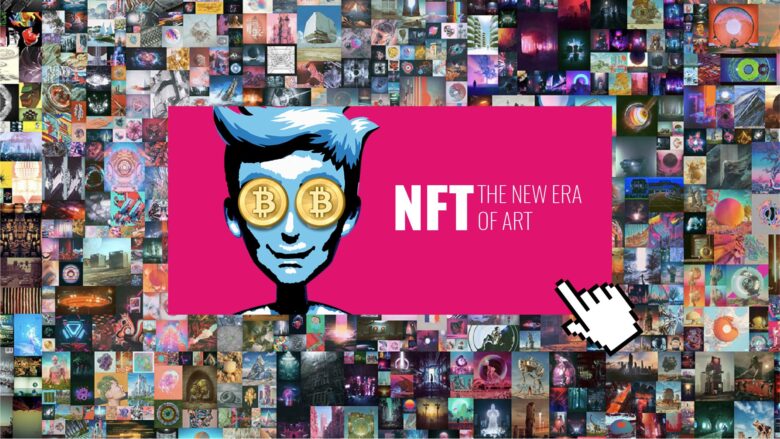Digital art has always been difficult to sell; without tangible objects to hold in their hands, people find it challenging to relate to digital files. Non-fungible tokens (NFTs) are revolutionizing this space. Artists can mint and sell their art using NFTs while also providing proof of ownership and provenance documentation – helping creatives take back power from intermediaries.
1. Creating Your Own Token
Digital artists love NFTs because they allow them to create and sell their work freely without being limited by Big Tech platforms. Furthermore, NFTs give digital artists access to crypto culture and its expanding community. National Fine Art Tenders (NFATs) provide artists with an inbuilt royalty system not available elsewhere – particularly those sold via Foundation, which pay out 10% royalties when their work sells.
Artists employing groundbreaking and controversial styles are finding success in the No Frequent Tussle marketplace, where works such as 3-D renderings and street art with oversaturated colors are drawing large audiences on Instagram and within crypto circles. But while NFT mania may offer several opportunities, it also comes with challenges.
2. Getting Started
Digital art may be vulnerable to “bit rot,” in which file formats cannot be opened or websites go offline, yet it offers artists a great platform to share their art with the world. NFTs give creators a platform that’s impossible to pirate, while also adding income streams through smart contracts – no wonder this form of art is drawing in creators from all around the globe!
Step one in starting up in NFTs is selecting an online marketplace. Curated platforms, like SuperRare, KnownOrigin, and Rarible, specialize in high-quality digital art and require artist approval in order to participate.
3. Licensing Your Work
NFTs allow artists to produce, sell, and trade their work while also providing immutable proof of ownership and provenance—revolutionizing the economic power balance between creators and audiences by funneling more money directly into artists’ hands.
As with any new technology, NFTs come with their own set of issues and challenges that must be overcome, copyright infringement being the foremost among them. Unfortunately, some artists have seen their works copied and sold without their knowledge or consent. Another issue relating to NFT creation is environmental impact, as NFT creation requires much computing power. Some marketplaces offer options to offset these environmental impacts.
4. Selling Your Work
NFTs offer digital creators an effective solution to this challenge by providing a means for artists to verify the ownership and authenticity of their creations. NFTs can also be minted to incorporate additional features, such as access to exclusive content or invitations to virtual events, which help artists develop closer relationships with their collectors while increasing the value of their works.
NFTs have also helped democratize the art world by providing artists a means of bypassing traditional gatekeepers such as galleries and auction houses. A recent sale by Beeple of an NFT art piece for $69 million at Christie’s highlights this trend.
5. Creating a Community
Building an online community can generate consistent recurring revenue and member value in ways you never imagined possible, and starting this process is easier than you might imagine.
First, identify 10 prospective members that best reflect your community identity. This group should be approached first in terms of building trust with them by providing value they find invaluable, before encouraging participation through rewarding it – this process takes time, but its results make the effort worth your while!
6. Getting Your Work Listed on a Marketplace
Many traditional artists are reluctant to venture into the New Frontier Technology world. However, transforming their artworks into NFTs allows them to reach a wider audience at a lower cost; additionally, technology could potentially expand their reach into markets previously dominated by a small number of wealthy patrons.
NFTs also give artists an avenue for exploring issues surrounding ownership and circulation; Sarah Meyohas’ Bitchcoin uses blockchain to challenge notions of ownership and authenticity. NFTs are revolutionizing how we think about art; that can only be seen as a good thing!
7. Getting Your Work Listed on a Marketplace
Many view the NFT art craze as just another passing fad, but for artists, it could provide a valuable new platform to connect with fans and further their career goals. NFTs enable creators to link physical works to impervious digital versions for maximum control on an international platform.
Blockchain provides proof of ownership and authenticity to ensure buyers receive what they paid for. Furthermore, many marketplaces pay artists royalties when they sell NFTs through secondary markets. Many traditional artists are beginning to convert their works into non-fungible tokens (NFTs) in order to take advantage of new market opportunities, creating greater accessibility of arts in communities where it may otherwise not exist.
8. Getting Your Work Listed on a Marketplace
As the NFT art phenomenon expands, artists and collectors are reaping its rewards – though some issues arise due to this phenomenon. One reason is that NFTs are drawing an unusual combination of art collectors and cryptocurrency speculators; this phenomenon recalls baseball card collecting or Martin Shkreli’s price-gouging within the pharmaceutical industry.
NFTs require significant computing power for creation and sale, which may take place in server farms powered by fossil fuels – something that has implications for both our climate and environment.
9. Getting Your Work Listed on a Marketplace
After creating a work of art, it is vital that it be listed on an art marketplace so it is accessible to buyers and can be quickly resold. NFT marketplaces also give artists an opportunity to showcase their work while receiving royalties for each sale, making this a fantastic way for artists to monetize their efforts.
These recent developments may leave many in the traditional art world perplexed, yet as technology develops, NFTs could soon become part of modern art’s mainstream landscape.




